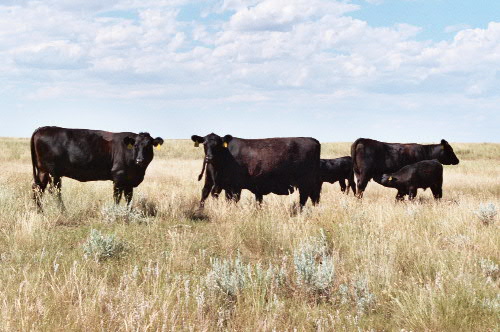
Agricultural News
Are Changes in Producer Expectations Altering Herd Expansion for 2017 and Beyond?
Mon, 31 Oct 2016 11:26:13 CDT
 Mondays, Dr. Derrell Peel, Oklahoma State University Extension Livestock Marketing Specialist, offers his economic analysis of the beef cattle industry. This analysis is a part of the weekly series known as the "Cow Calf Corner" published electronically by Dr. Peel and Dr. Glenn Selk. Today, Dr. Peel looks into the current status of the US beef herd expansion.
Mondays, Dr. Derrell Peel, Oklahoma State University Extension Livestock Marketing Specialist, offers his economic analysis of the beef cattle industry. This analysis is a part of the weekly series known as the "Cow Calf Corner" published electronically by Dr. Peel and Dr. Glenn Selk. Today, Dr. Peel looks into the current status of the US beef herd expansion.
"The unexpectedly rapid and harsh adjustment in feeder cattle prices in 2016 has raised many questions about the status of herd expansion late in the year and beyond. Have changes in producer expectations altered herd expansion in 2016 and, more importantly, for 2017 and beyond? Begin with a review of the story so far. On January 1, 2015 the inventory of replacement heifers was a record 20.8 percent of the beef cow inventory. Beef cow slaughter in 2015 was a record low level of 7.6 percent of the beef cow herd inventory. The combination of large replacement heifer inventories and low cow slaughter facilitated the 3.5 percent year over year jump in beef cow inventories in 2015.
"On January 1, 2016 the inventory of beef replacement heifers was 20.7 percent of the herd inventory; nearly as large a percentage as the record 2015 level. With large replacement heifer inventories available, the beef cow herd was poised to continue strong herd expansion in 2016. USDA did not provide a July Cattle report so no mid-year update of herd expansion was available. Quarterly cattle on feed inventories show that heifers in feedlots increased year over year in April and have been higher by a consistent amount of roughly 4.5 percent year over year in the July and October quarters as well. The October 1 heifer on feed inventory was still 8.5 percent below the previous five year average for that date. Heifer slaughter was below year earlier levels into early June and has shown year over year increases so far in the second half of the year. Weekly heifer slaughter has averaged 11.7 percent year over year increases since July. The result is year to date heifer slaughter that is up 2.5 percent over 2015 and with continued year over year increases for the remainder of the year is projected to finish with an annual total up roughly 3.5 percent year over year.
"Beef cow slaughter started 2016 with the low levels from 2015 but quickly changed to year over year increases by the end of the first quarter. The second and third quarters showed even stronger year over year increases resulting in a year to date increase in beef cow slaughter of 12.1 percent compared to last year. Strong beef cow culling through the rest of the year is projected to bring the 2016 annual beef cow slaughter to a roughly 13 percent year over year increase. More beef cow slaughter is expected because 1) last year's net culling was unsustainably low and 2) the one million head increase in cow numbers last year inevitably means more cow culling. However, the projected rate of 2016 beef cow slaughter would represent a net beef herd culling rate of less than 8.5 percent of the herd, well below the average level of nearly 10 percent. In other words, beef cow culling has not returned to normal levels and the 2016 beef cow slaughter level is consistent with continued modest herd expansion this year.
"The rate of beef cow slaughter and modest year over year increases in feedlot heifer inventories since April do not yet indicate herd liquidation but may point to little or no additional herd expansion in 2017. The ratio of steer to heifer slaughter increases during herd expansion and typically peaks and begins declining several months to more than a year ahead of the cyclical peak in cow inventories. The ratio of steer to heifer slaughter (12-month moving average) peaked most recently in July, 2016 (at the highest level since February, 1975) and declined slightly in August and September. This most likely suggests a herd inventory peak at the end of 2017 but will depend on how fast the ratio changes in the coming months."
WebReadyTM Powered by WireReady® NSI
Top Agricultural News
More Headlines...




















